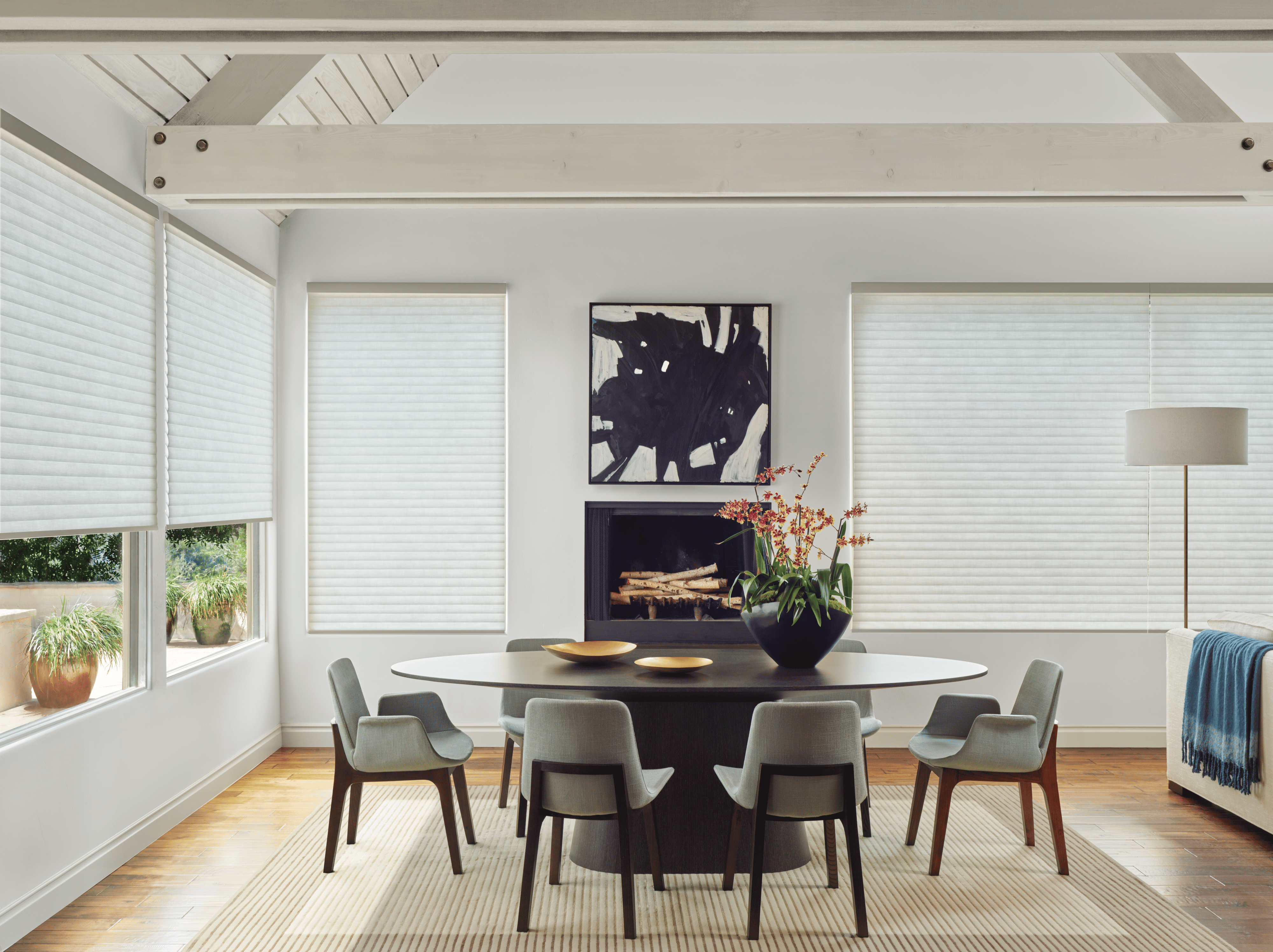
Dining Room Window Treatments
Buyer's Guides
Dining Room Window Treatments
November 28, 2022
by Hunter Douglas
Would formal dining room drapes or traditional window treatments work best? And what about your privacy and light control needs.
Which Window Treatments Work Best on Dining Room Windows?
Whether your home has a formal, dedicated room for dining or you have an open concept, multifunctional layout for casual entertaining, window treatments are key for anchoring the space while also providing natural light control.
And when it comes to options for shades and blinds in the dining room, pretty much anything goes, based on your personal taste. With that in mind, let’s take a look at some of the styles available, starting with side panels and drapery.
Drapery for Dining Room
You might think that side panels and drapery work best in a formal dining area, but these window treatments work just as well in a more relaxed space. They’re a great way to add softness, texture and color, especially when paired with other window treatments. Plus, the sky’s (almost) the limit when it comes to choices.
You can customize your drapery with the pleat style, level of fullness and hardware that appeals to you. For the finishing touch, consider customized pillows to match or order fabric by the yard to create complementary accents throughout your home.
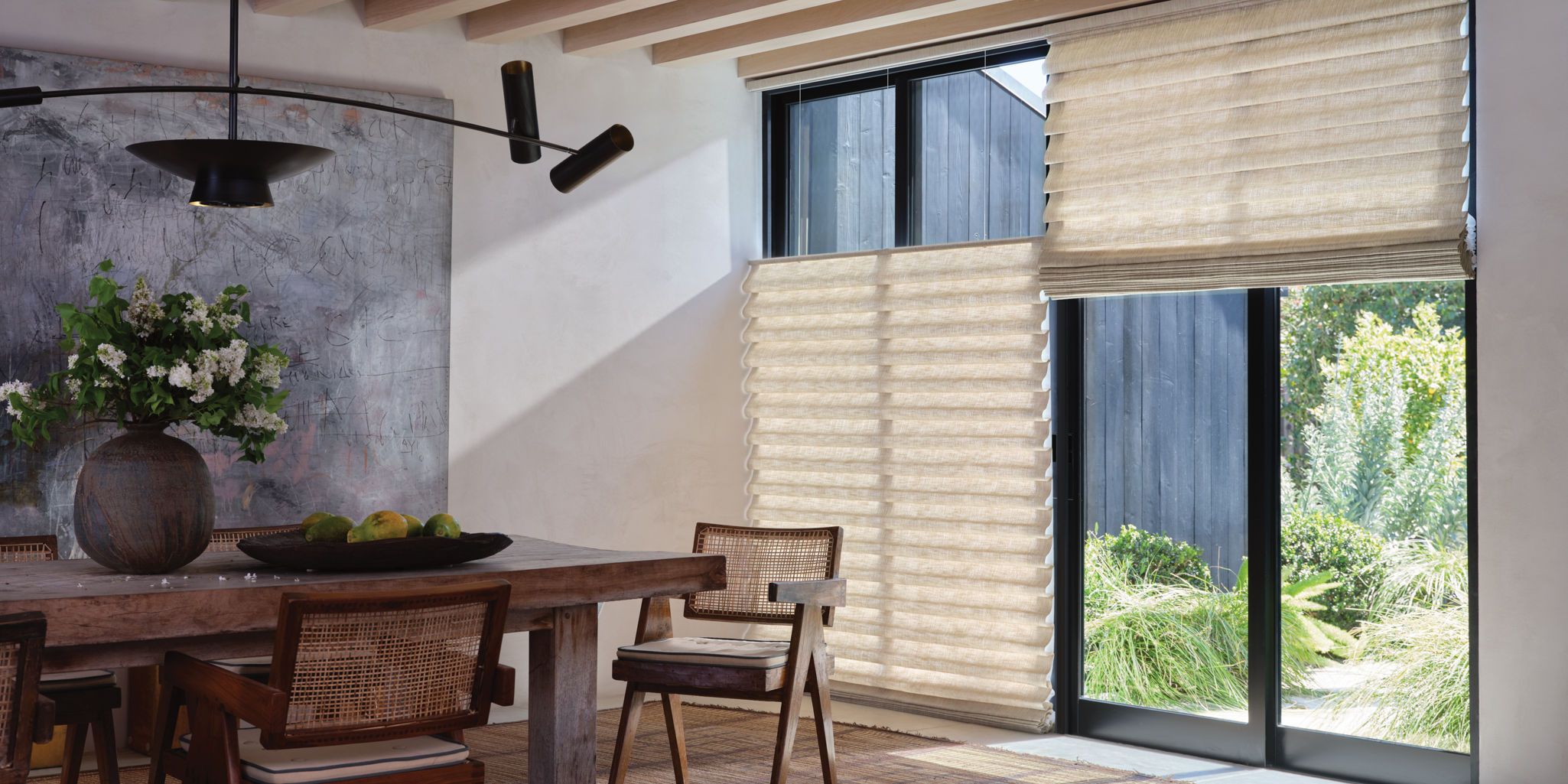
Dining Room Roman Shades
Roman shades, which are an eye-catching way to pull a dining room together, are extremely versatile. They can add a hint of formality while still working well in a laid-back space.
Available in a host of colors and patterns, you’ll also find iterations on the traditional Roman shade style.
Woven Wood Shades
Made from natural materials such as bamboo, grasses, reeds and jute, woven wood shades add an organic look at the window—plus, they’re an ideal complement to wood dining room furniture or rattan accents.
Woven wood shades offer varying levels of privacy and light control, so if you desire less light-filtering and more privacy, you might want to add a liner to your shades.
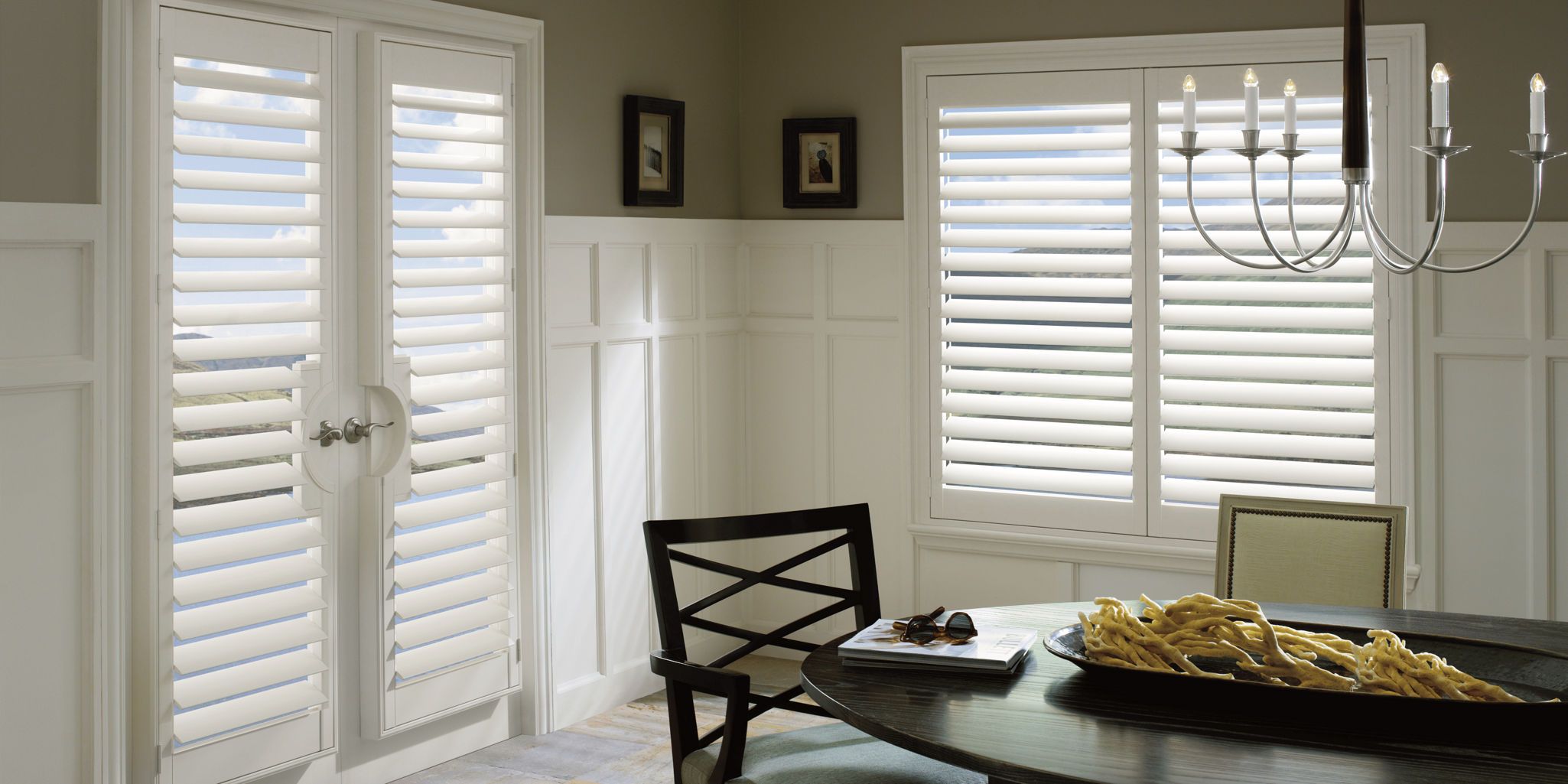
Shutters for Dining Rooms
Considered “premium furniture” for windows, shutters add a classic elegance to a dining room and are available in everything from genuine hardwood and vinyl to composite.
The material you choose for your dining room shutters all depends on the look you want to achieve and the demands of the space. If you want a timeless, enduring style, then opt for genuine hardwood—just make sure to select hardwood shutters manufactured from sustainably harvested forests.
Vinyl shutters are ideal if you live where it’s hot and humid. Shop for styles that are UV and water resistant, to withstand your climate’s conditions.
Composite shutters are a good choice if you love hardwood, but you also want something that stands up to the boundless energy of kids and pets.
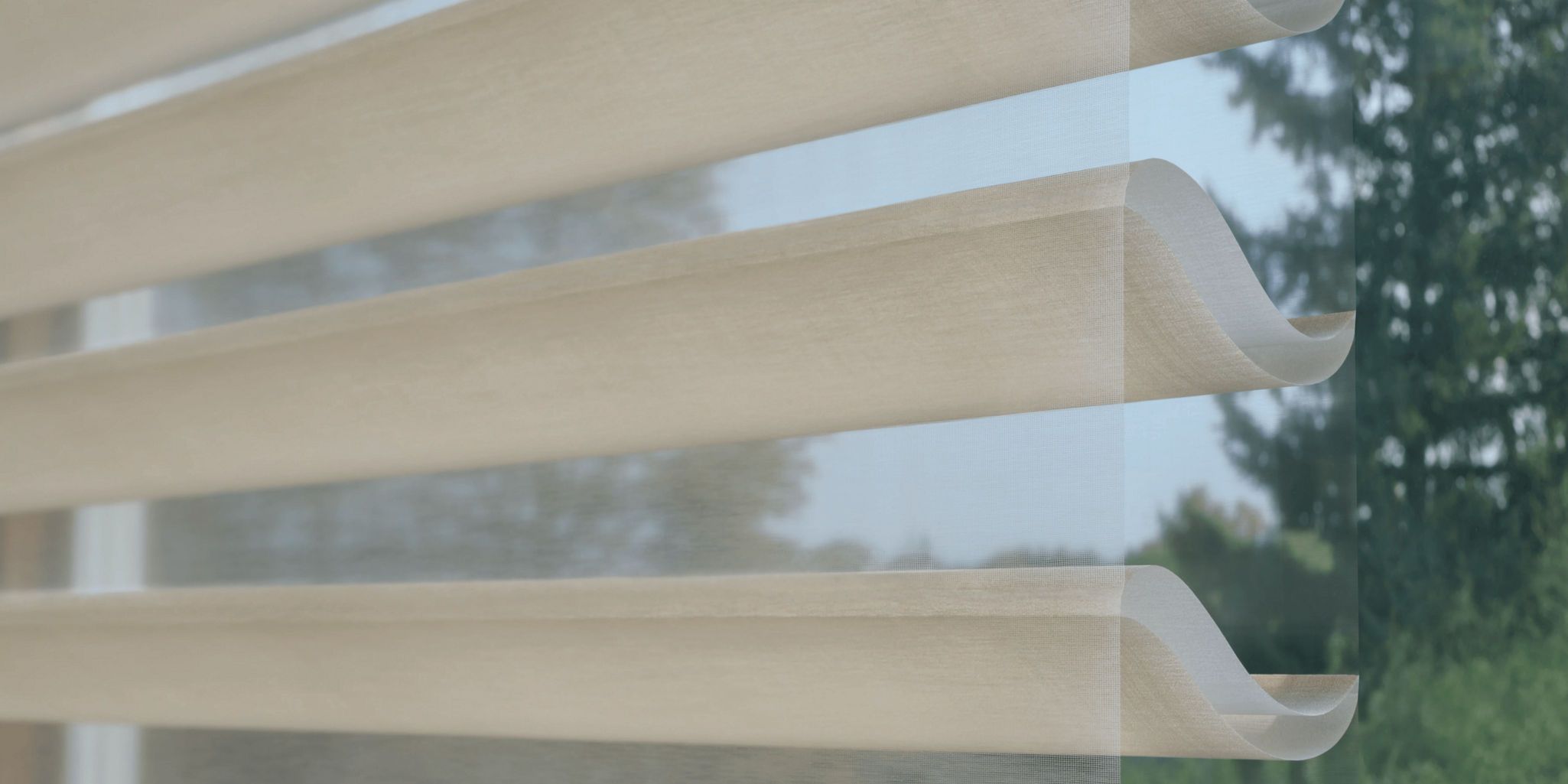
Sheer Shades
For dining rooms that overlook gorgeous views, sheer shades beautifully diffuse natural light while still allowing you to see outside—and maintaining your sense of privacy.
are a distinctive take on sheer shades. They feature a unique, double layer of S-shaped fabric vanes that appear to be floating between two sheer fabric panels. The vanes rotate up, down or anywhere in between, so you can manage the direction of natural light in a room throughout the day.
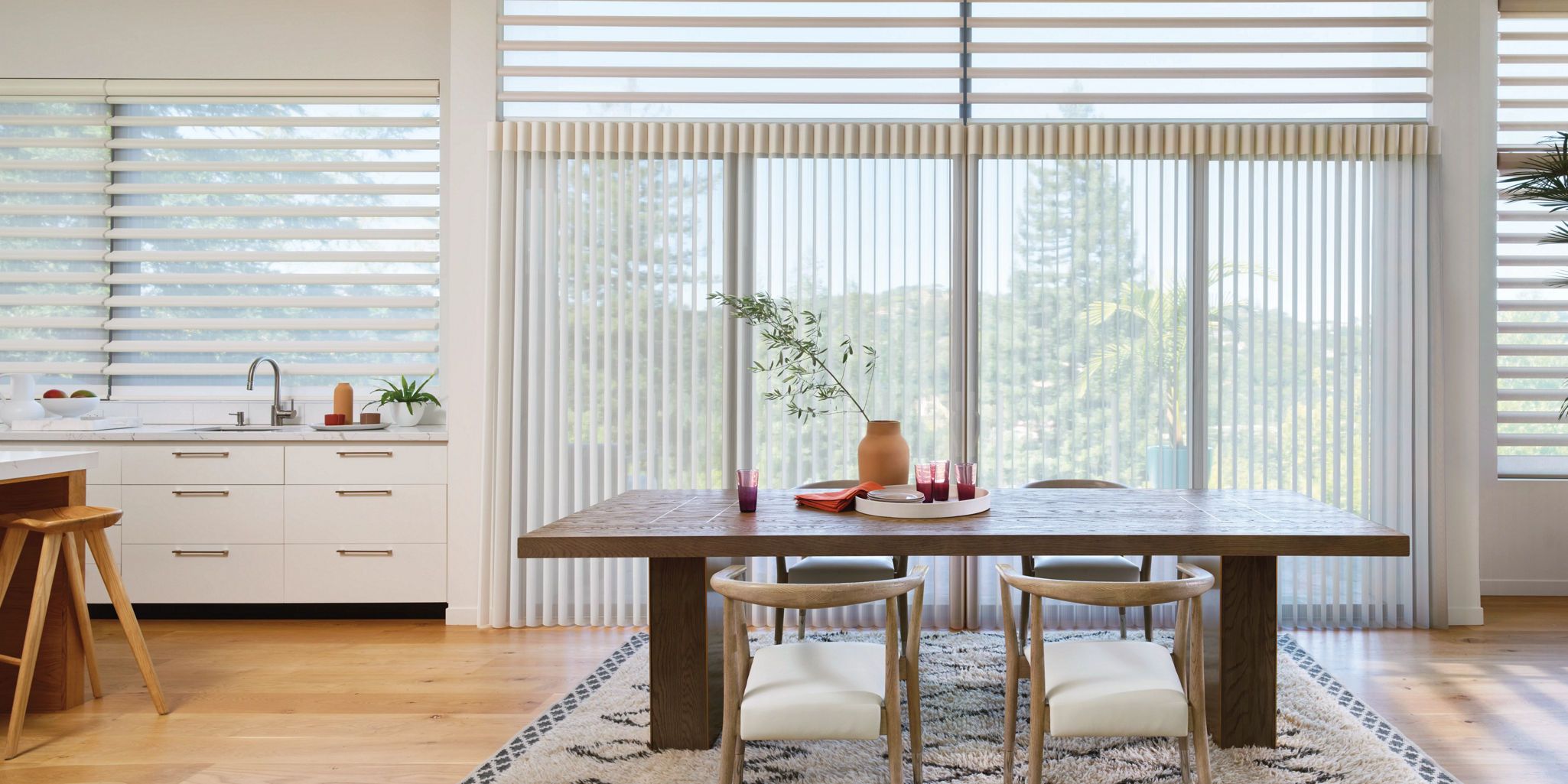
Coordinating Horizontal and Vertical Window Treatments
Say you have both horizontal and vertical windows in your dining room. The Whole House Solution™ makes choosing the right products easy by coordinating many Hunter Douglas horizontal coverings with complementary vertical treatments—some product lines even share the same fabric names. Keep in mind that because of their construction and the way they stack and filter light, fabrics on horizontal and vertical applications may have slightly different appearances.
Layering Drapery and Shades in the Dining Room
Layering dining room drapery and shades not only creates visual interest, it increases energy efficiency and gives you more ways to control light. Since drapes are much easier to change out, first choose the type of shade. If your dining room is small, you might want a shade with a cleaner look. If your dining room is larger, a more colorful, dramatic shade could work better.
Light-colored shades contrast nicely with a dark drape. If your shade is solid, maybe consider a drape with a colorful pattern. Whatever you choose, pairing drapes and shades can really add drama and dimension to your dining room.
MORE BUYER'S GUIDES
View allRequest a Consultation
Connect with a local dealer for personalized service.